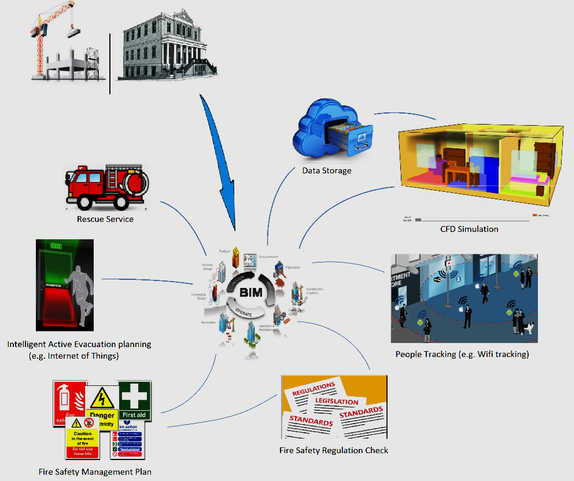A Data Driven approach towards evacuation from buildings in fire conditions
Researchers:
- Soheila Bigdeli
- Nico Van de Weghe (supervisor)
- Steven Verstockt (supervisor)
- Bart Merci (supervisor)
Description:
Introduction Nowadays complex building designs, new construction materials, and ever-changing layout of the buildings all stress the difficulty to properly address evacuation in modern buildings. There has been a shift away from the legislation-based set of rules (prescriptive approach) towards a performance-based approach to fire safety engineering. One of the challenges is determining the attained level of fire and life safety. The project will realize coupling between the BIM model and fire engineering practice allowing for an iterative data-based fire and life safety strategy to be put into place, which can be adapted during the lifetime of the building, considering data from evacuation exercises and CFD simulations. End Goal The purpose of this research is to develop a methodology that uses 3D geometrical model of the building enriched with semantics, smoke, and fire spread information obtained from CFD simulations, and evacuation data obtained from indoor tracking of occupants, to realize a complete performance-based framework towards evacuation. It permits evaluation of the envisioned evacuation strategy and highlights problem areas and zones, which form a bottleneck during the evacuation. The data collected in this way can then serve to develop a data-driven evacuation strategy for the building and other similar buildings. Coupling of BIM and Fire simulation Simulation results of how fire and smoke would spread throughout the building have a significant impact on evacuation strategy adoption. Preparing the geometric input and semantic data for CFD simulations is a time-consuming process. Reading data from the BIM model of the building can speed up the process of setting up simulation models. It helps to reduce human errors and allows the use of real-life geometrical and thermophysical characteristics of the building in CFD simulations. Coupling of BIM and Evacuation Indoor tracking technologies, from Bluetooth low-energy beacons to wifi tracking systems, give the possibility to locate occupants inside the building. If mapped on the Building Information Model of the building, the possibility to track people in the building opens up new possibilities towards evacuation modeling. The addition of CFD simulation results to this will allow realizing if people taking specific routes will be safe or not.


